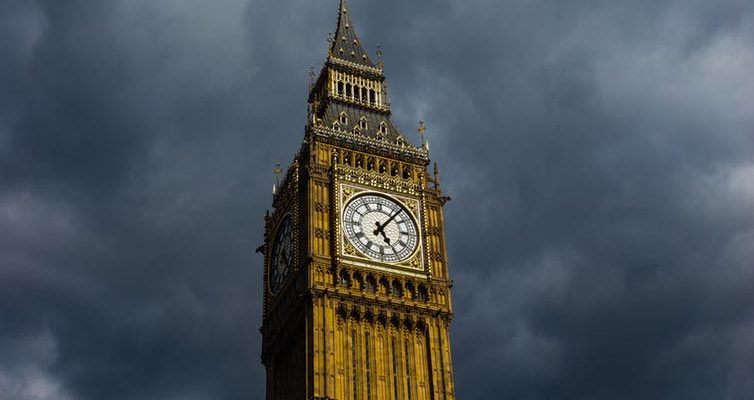What will Brexit mean for the climate? (Clue: it doesn’t look good)

With Brexit negotiations stuck on divorce bills and borders, complex issues such as climate change barely receive a mention. Yet the UK has agreements with the EU around emissions targets and technology transfer, and Brexit represents a significant threat to the UK’s progress on cutting carbon emissions.
The UK’s recent clean growth strategy document devotes scant attention to Brexit, providing only a single page on “leaving the European Union”. Yet, other public institutions, as well as the mainstream media, have raised questions concerning climate change, Brexit and the UK government’s attitude.
The TRANSrisk project is studying risk and uncertainty in low carbon transitions across the globe. Since our inception in 2015, Brexit has introduced a significant new area of uncertainty, with three key issues emerging. These are the UK’s future within a) the United Nations Framework Convention on Climate Change (UNFCCC) (including the Paris Agreement); b) the European Union Emissions Trading System (EU-ETS); and c) the EURATOM nuclear research and training programme.
Alone in Paris
The UK has been a champion for efforts to mitigate and adapt to climate change. However, to date the UK has acted within the UNFCCC as part of a single entity – the EU. Adherence to the Paris Agreement was established by a single decision binding all 28 members, and the EU has presented a common Nationally Determined Contribution (NDC) declaring its ambitions to reduce emissions.
After Brexit, the UK will need to establish up its own position within the UNFCCC as an independent member. It will have to ratify the Paris Agreement on its own, and produce its individual NDC. Whilst this is achievable, time, space and resources will be required. The delay could possibly leave the UK behind compared to other international actors.
Exiting the EU-ETS is another serious issue. It is the world’s oldest and largest emissions trading scheme and is the primary joint tool adopted by the EU to reduce carbon. The scheme allocates free and/or auctioned allowances to operators, and creates a market for those who wish to purchase or sell allowances. A shrinking cap for allowances reduces emissions over time, directing efforts to where emission cuts are most cost effective. The EU-ETS has also triggered growth in climate-related financial services.
The EU-ETS had multiple benefits for the UK. It has helped the UK meet its ambitious emissions targets, while allowing heavy emitters to keep operating by purchasing relatively cheap allowances from other European countries. Moreover, London’s role as financial hub has made it the largest EU-ETS exchange market, giving the UK a leading role in climate-related financial services.

London could suffer. Photo from Shutterstock.
The UK may establish its own national ETS, but there is huge uncertainty over timing, size, shape and effectiveness. This is highly detrimental for UK companies subject to the EU-ETS that will lose access to the system from January 2018, hence facing significant cost increases for their emissions reductions. In addition, London may lose its leading position in climate related-financial services.
The market
Market size – which contributes to liquidity, stability and efficiency – represents a final threat for both the EU and the UK, with the former losing one of the EU-ETS’s largest actors and the latter facing the risk of setting up an unworkably small national system.
International agreements provide hope for avoiding the worst outcomes. Several scholars identified Article 6 of the Paris Agreement as the tool for linking independent ETS. Under Article 6, we can conceive an interconnection of an UK-ETS and EU-ETS. This could lead to further market linkages between the two in sectors including energy, manufacturing and finance, helping to define new economic relationships between the UK and the EU.
EURATOM, meanwhile, is Europe’s coordinating agency for civil nuclear development and is one of the oldest institutions of the EU. Over the decades, EURATOM has led to a highly interconnected implementation of nuclear technologies and facilities. Brexit will trigger the UK’s automatic exclusion from EURATOM, creating an urgent need to agree new arrangements.
UK clean energy strategy relies heavily upon nuclear – and a hard exit from EURATOM would deal a huge blow to the sector. Strategic partnerships with European actors may be lost including EDF, the technology provider for the Hinkley Point C plant currently under construction. It also poses a threat to British companies in the sector (for example, Rolls Royce), challenging the fundamental sustainability of the UK nuclear programme.
Space for hope … and fear
The magnitude of these threats is unclear at the present stage of Brexit negotiations, but the current absence of climate change from the negotiation table is itself a reason for worry. Nevertheless, Brexit creates opportunities as well as threats. The UK will be free to build on its history as a climate champion by developing stable growth based upon a “clean” pathway. With a supportive domestic market, UK providers of clean energy systems could find lucrative markets abroad.
Yet, any possible solution to Brexit-related climate change issues lies in the hands of those charged with the whole Brexit process. Prominent supporters of Brexit, including current UK ministers, have declared their scepticism towards the anthropogenic origins of climate change, raising further doubts about the chance for a positive handling of the climate issue within Brexit debate.
About the authors
Dr Michele Stua is a Research Fellow at the Science Policy Research Unit at the University of Sussex. Ed Dearnley, is Project Manager for TRANSrisk, University of Sussex.
This article was originally published on The Conversation. Read the original article.




